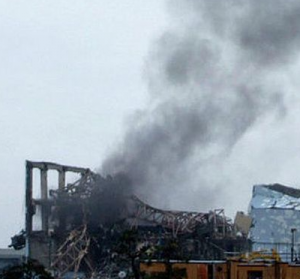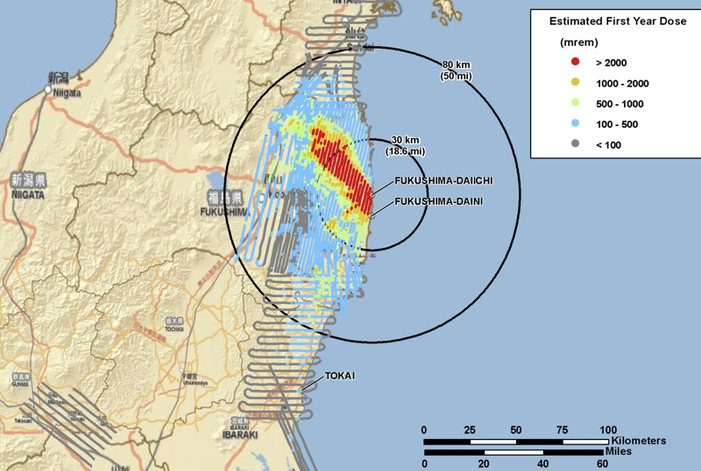Five months after the devastating earthquake and tsunami, work is still going on to clean up the stricken Fukushima nuclear power plant. Despite recent assurances from TEPCO, the utility that runs the plant, Britain's Channel 4 News aired this sad and startling report by reporter John Sparks, who spoke with bused-in workers living in a dormitory in nearby Iwaki City. Watch the full report in the right-hand window. TEPCO had provided its own update the day before Channel 4's broadcast. After a brief formal apology by Masao Yoshida, the plant's general manager, a video stressed the heroic efforts and progress being made at the Fukushima Daiichi site. It included views of the trouble-prone replacement waste treatment and cooling system, which broke down several times since its improvised installation shortly after the quake.
The videos relate starkly different worlds inside the plant. The truth probably lies somewhere between. To put these two videos in perspective, here's some background information: on August 11, Japan Today wrote that TEPCO said that it had been unable to locate 143 people who had worked to restore the nuclear plant since last May. TEPCO hired the workers through subcontractors from all over Japan for limited periods and kept no records of their addresses.
Asahi Geino reported in May that ...the daily remuneration was three times that of regular day jobs if within the grounds of the reactor complex, and 1.5 times higher if within the wider area now restricted due to high radioactivity. While safety measures are in place to keep workers' daily exposure to radiation within safe levels, claims for compensation due to sickness from overexposure are unlikely to be paid out, the magazine reported.

Here's another example of TEPCO's cumbersome bureaucracy: Japan's system to forecast radiation threats was working from the moment its nuclear crisis began, Fuel Fix wrote August 9. When officials planned a venting operation certain to release radioactivity into the air, the system predicted Karino Elementary School would be directly in the path of the plume. But nobody was told. The school, just over six miles from the plant, was not immediately cleared out. Instead, it was turned into a temporary evacuation center.

Reports from the forecast system were sent to Japan's nuclear safety agency, but the flow of data stopped there. Prime Minister Naoto Kan and others involved in declaring evacuation areas never saw the reports, and neither did local authorities. Thousands of people stayed for days in areas that the system had identified as high-risk. Many similar incidents have slowly shredded the nation's trust in TEPCO. Now there are even citizens groups privately monitoring radiation levels. In Japan, that says a lot.


